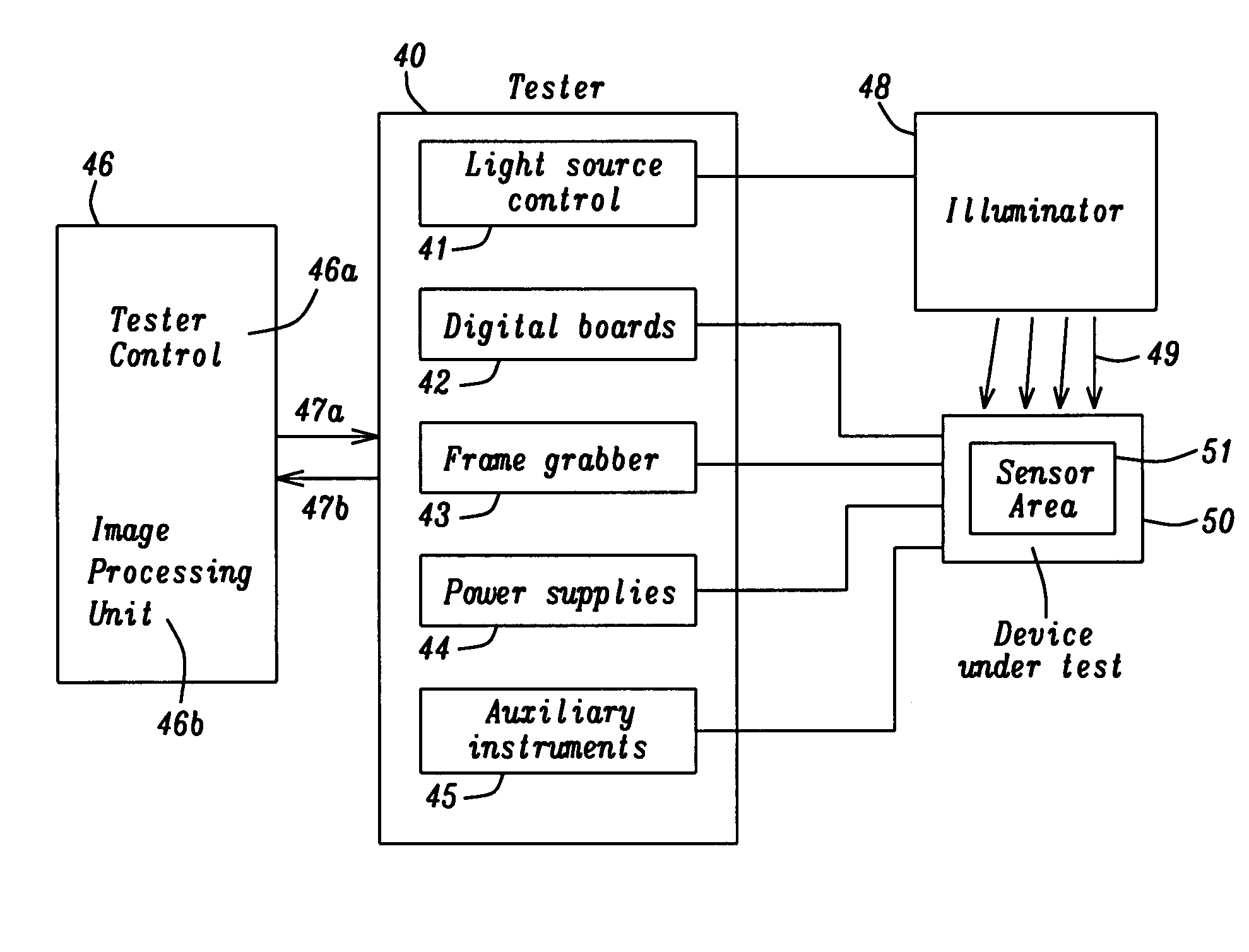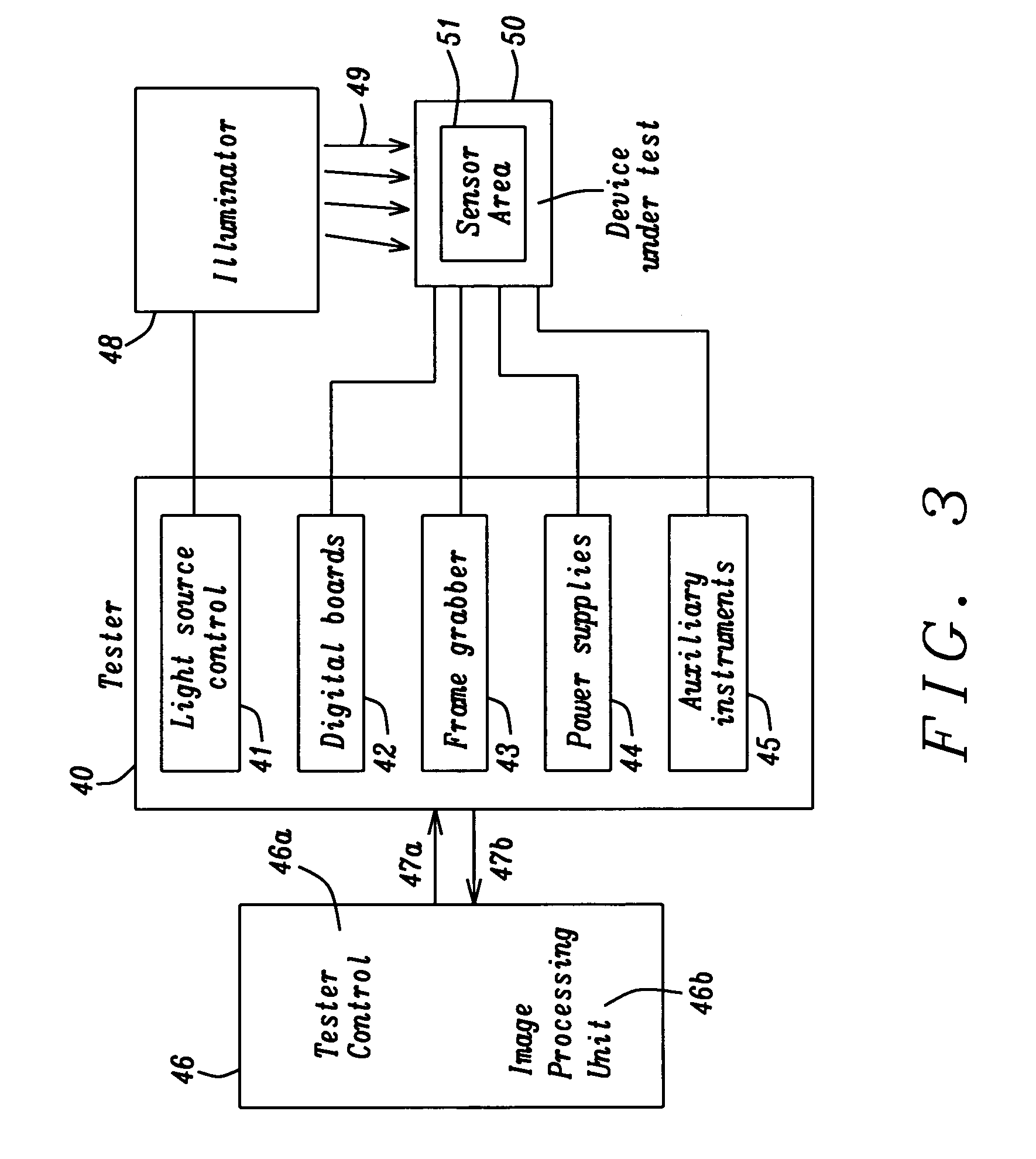On chip test mode implementation
- Summary
- Abstract
- Description
- Claims
- Application Information
AI Technical Summary
Benefits of technology
Problems solved by technology
Method used
Image
Examples
Embodiment Construction
[0027]The present invention is a method of improving the throughput of the photon transfer curve (PTC) test and dark current test when checking the reliability of pixels in an image sensor device. The drawings are provided by way of example and are not intended to limit the scope of the invention. The terms “exposure” and “illumination” may be used interchangeably.
[0028]The inventors have previously practiced a PTC and dark current test method wherein between five and ten different illumination levels involving two frames each are used to provide PTC measurements, and an additional set of frames (5 to 10) without illumination are needed for dark current calculations. For example, in FIG. 1, images 10-14 resulting from five different exposure times (illumination levels) during a PTC test are illustrated. In other words, the illumination portion of the PTC test has been divided into steps such that each pair of two frames is uniformly illuminated for a certain time. The illumination t...
PUM
 Login to View More
Login to View More Abstract
Description
Claims
Application Information
 Login to View More
Login to View More - R&D
- Intellectual Property
- Life Sciences
- Materials
- Tech Scout
- Unparalleled Data Quality
- Higher Quality Content
- 60% Fewer Hallucinations
Browse by: Latest US Patents, China's latest patents, Technical Efficacy Thesaurus, Application Domain, Technology Topic, Popular Technical Reports.
© 2025 PatSnap. All rights reserved.Legal|Privacy policy|Modern Slavery Act Transparency Statement|Sitemap|About US| Contact US: help@patsnap.com



